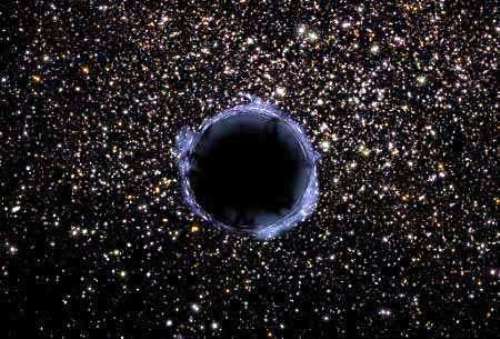Scientists stunned as ravenous black hole that defies physics consumes 3,000 suns per year
09/23/2025 / By Cassie B.

- A newly discovered supermassive black hole is growing at 2.4 times the theoretical speed limit, consuming 300 to 3,000 suns per year.
- Scientists are forced to rethink black hole physics as this cosmic giant defies the Eddington limit, suggesting a new formation theory.
- This black hole’s extreme growth could explain why massive black holes existed so early in the universe’s history.
- Located 12.8 billion light-years away, it offers a rare glimpse into the chaotic conditions of the infant universe.
- The discovery challenges current astrophysical models and hints at more cosmic anomalies waiting to be uncovered.
Astronomers have discovered a supermassive black hole so voracious it’s growing at 2.4 times the theoretical speed limit, defying everything we thought we knew about these cosmic behemoths. Located 12.8 billion light-years away, this ravenous entity, named RACS J0320-35, is gobbling up the equivalent of 300 to 3,000 suns per year, making it one of the fastest-growing black holes ever observed.
The findings, published in The Astrophysical Journal Letters, reveal that this black hole is not just breaking records; it’s forcing scientists to question the very foundations of black hole physics.
A black hole that shouldn’t exist
Black holes grow by consuming surrounding matter, but there’s a theoretical cap on how fast they can feed known as the Eddington limit. This limit is the point where the outward pressure of radiation from infalling matter balances the black hole’s gravity, preventing further growth.
Yet RACS J0320-35 is shattering that limit.
“It was a bit shocking to see this black hole growing by leaps and bounds,” said Luca Ighina, study author at the Harvard-Smithsonian Center for Astrophysics.
The black hole’s extreme appetite suggests it may have formed differently than previously thought. Most supermassive black holes in the early universe were believed to have started as massive “seeds” from collapsing gas clouds. But if this black hole has been growing at such a breakneck pace, it could have begun as a much smaller stellar remnant of less than 100 times the mass of our sun before ballooning into a billion-solar-mass monster.
A cosmic mystery with far-reaching implications
This discovery doesn’t just challenge our understanding of black hole formation; it could rewrite cosmic history. If super-Eddington growth (growth beyond the theoretical limit) is more common than assumed, it would explain why we see massive black holes so early in the universe’s history.
“How did the universe create the first generation of black holes?” asked co-author Thomas Connor. “This remains one of the biggest questions in astrophysics, and this one object is helping us chase down the answer.”
The black hole is also producing more X-rays than any other in the first billion years of the universe, suggesting that rapid growth may be linked to the powerful jets of energy blasting from its core.
A glimpse into the early universe
Because RACS J0320-35 is 12.8 billion light-years away, we’re seeing it as it was just 920 million years after the Big Bang. This makes it a crucial piece of the puzzle in understanding how black holes evolved in the infant universe.
The findings were made possible by NASA’s Chandra X-ray Observatory, which detected the black hole’s intense X-ray emissions. Combined with radio and optical data, researchers confirmed its unprecedented growth rate.
What does this mean for astrophysics?
If black holes can grow this fast, our current models may be missing something fundamental. Some theories suggest that super-Eddington growth could be more common in the early universe, when conditions were far more chaotic than today.
This discovery also raises questions about the formation of quasars, the ultra-bright objects powered by supermassive black holes. If rapid growth is possible, it could explain why some quasars appear so soon after the Big Bang.
With telescopes like Chandra and the James Webb Space Telescope peering deeper into the cosmos, more of these cosmic rule-breakers may be found. Each one brings us closer to understanding the true nature of black holes and how they shaped the universe we see today. For now, RACS J0320-35 stands as a testament to the universe’s ability to defy expectations.
Sources for this article include:
Submit a correction >>
Tagged Under:
astrophysics, black hole, cosmic, cosmos, discovery, NASA, physics, research, Space, universe formation, x-rays
This article may contain statements that reflect the opinion of the author
RECENT NEWS & ARTICLES
COPYRIGHT © 2017 SCIENTIFIC NEWS





















